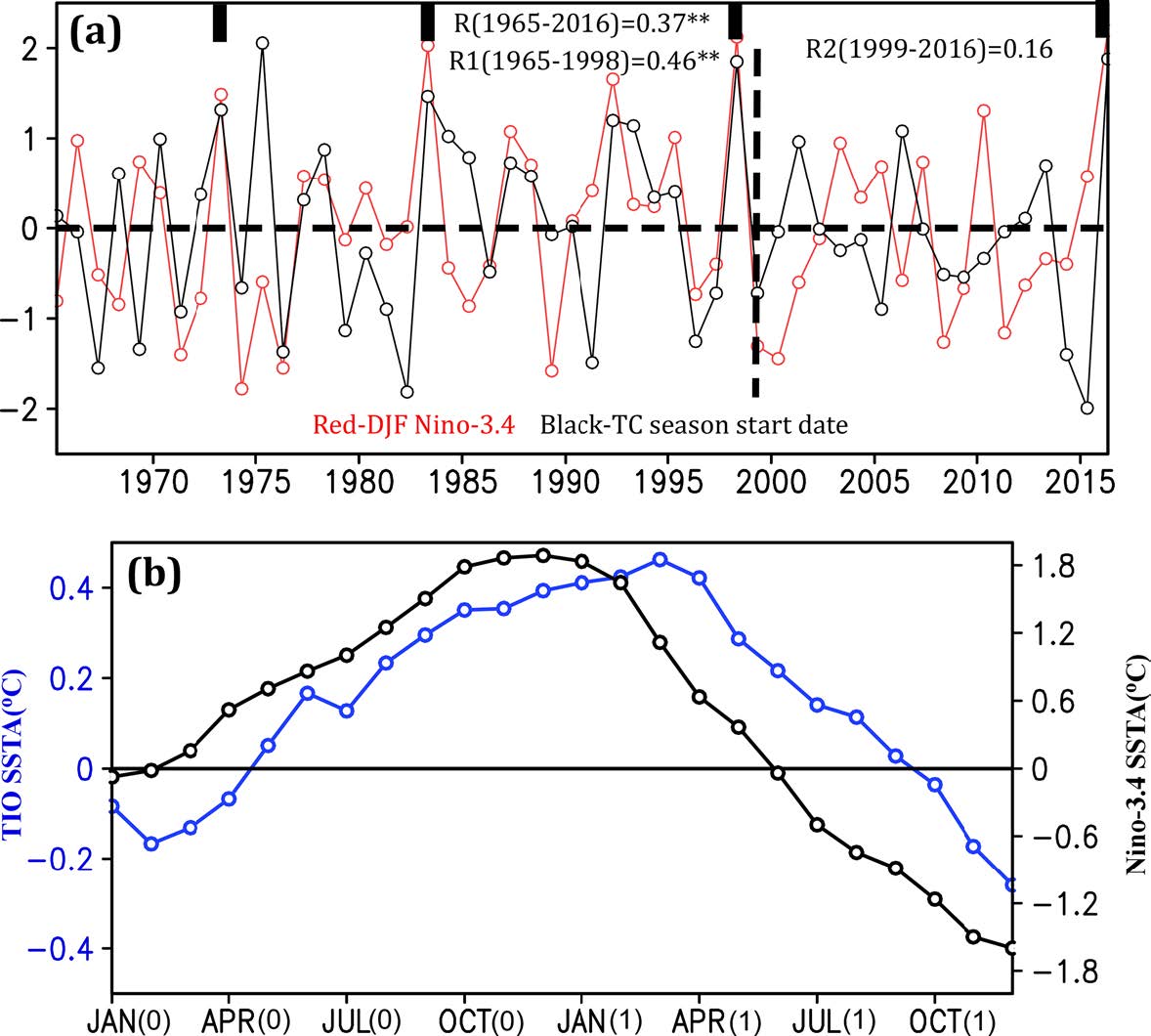Zhao, H., L. Wu, C. Wang, and P. J. Klotzbach, : Consistent late onset of the western North Pacific tropical cyclone season following major El Nino events. Journal of the Meteorological Society of Japan, 97, 673-688 , https://doi.org/10.2151/jmsj.2019-039
Key Points
Abstract
Most studies have focused on variations of tropical cyclone (TC) frequency, intensity, and track over the western North Pacific (WNP), but variability of WNP TC season onset date (TCSO) has been less studied. Recent research has indicated a close association between WNP TCSO and sea surface temperature (SST) over the tropical Indian Ocean and the tropical central-eastern Pacific. This study has found that relationship between TCSO and SST underwent an inter-decadal change in the late 1990s, likely due to a climate shift that occurred around that time. An observed significant correlation between TCSO and SST before the late 1990s has been insignificant since that time. This was confirmed by the fact that El Niño Southern Oscillation (ENSO) at 0.46 positively correlates with TCSO from 1965 – 1999 (significant at the 95 % level), and the correlation becomes insignificant (0.16) during 1998 – 2016. Further analysis suggests that the close association between TCSO and SST is robust only for major El Niño events, with consistently extreme late TCSO following major El Niños during the satellite era. Accompanying the decay of major El Niños, tropical equatorial easterly anomalies in the WNP are driven by a Matsuno–Gill-type response to the specific SST anomaly pattern over the tropical Indo–Pacific sector. This in turn induces an anomalous anticyclone, anomalous westerly vertical wind shear, reduced mid-level moisture and suppressed convection over the WNP basin—all of which are unfavorable for WNP TCs, resulting in delayed TCSO following major El Niño events. These inter-decadal changes in the inter-annual correlation between TCSO and ENSO are largely due to the changing influence of moderate El Niño events on TCSO before and after the late 1990s. This study improves understanding of the ENSO–TC relationship, which should aid seasonal outlooks of WNP TC activity.
Key Figure
Fig. 3. (a) Inter-annual correlation between the standardized onset date of the WNP TC season and the December-February (DJF) Niño-3.4 index. Correlations during 1965 – 2016, 1965 – 1998 and 1999 – 2016, respectively, are 0.37 (significant at the 95 % confidence level), 0.46 (significant at the 95 % confidence level) and 0.16 (not significant at the 95 % confidence level). (b) Evolution of SST anomalies over the Niño-3.4 region and tropical Indian Ocean composited on four strong El Niño events (i.e., 1972/1973, 1982/1983, 1997/1998, and 2015/2016).
Acknowledgments
This research was jointly supported by the National Natural Science Foundation of China (41675072 and 41730961), the Qinglan Project of Jiangsu Province (R2017Q01), the Natural Science Foundation of Jiangsu Province (BK20170941), and the Priority Academic Program Development of Jiangsu Higher Education Institutions (PAPD). P. Klotzbach would like to acknowledge a grant from the G. Unger Vetlesen Foundation.
